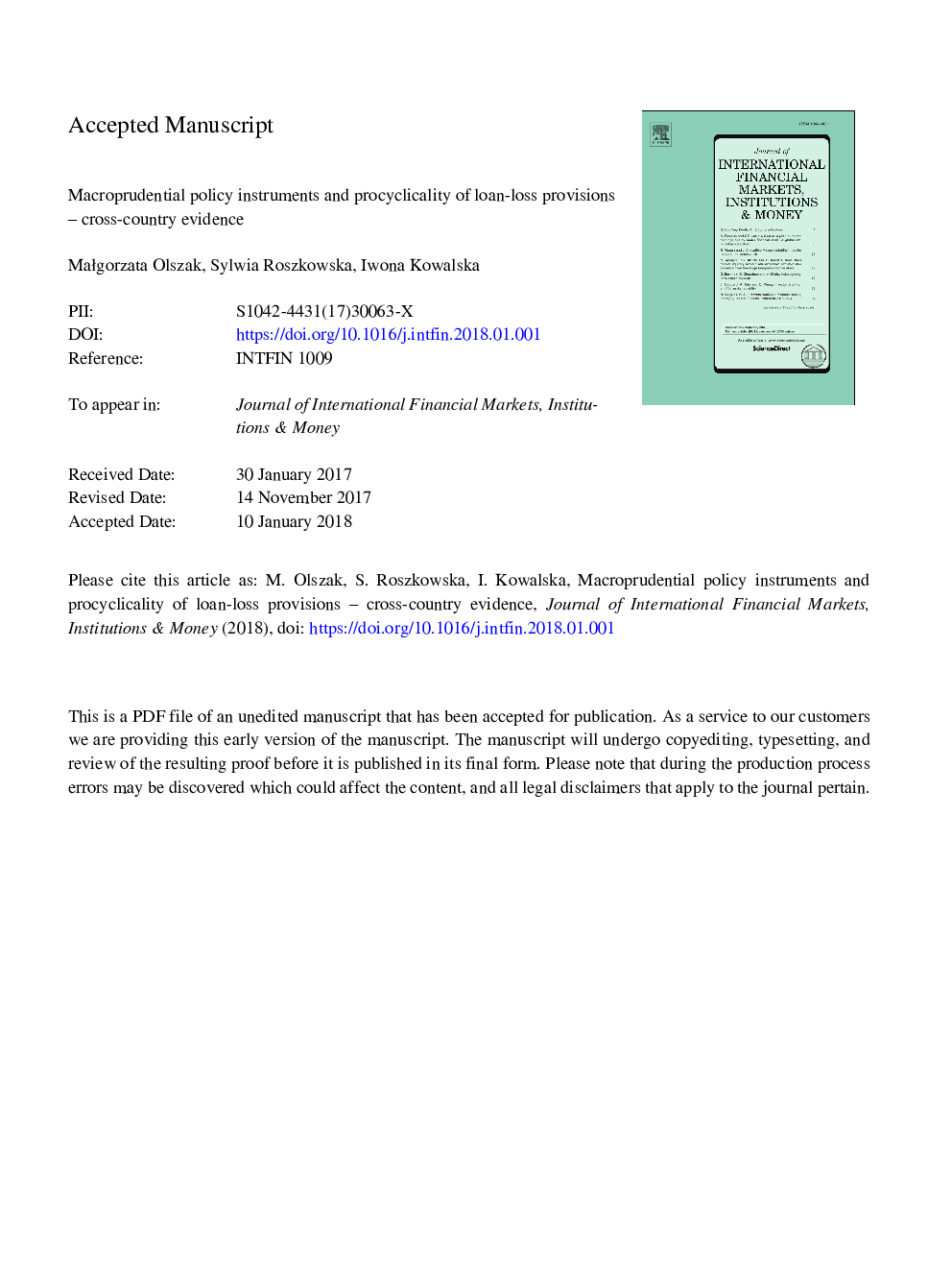| Article ID | Journal | Published Year | Pages | File Type |
|---|---|---|---|---|
| 7364241 | Journal of International Financial Markets, Institutions and Money | 2018 | 56 Pages |
Abstract
We analyze the effectiveness of various macroprudential policy instruments in reducing the procyclicality of loan-loss provisions (LLPs) using individual bank information from over 65 countries and applying the two-step GMM Blundell-Bond (1998) approach with robust standard errors. Our research identifies several new facts. Firstly, borrower restrictions are definitely more effective in reducing the procyclicality of loan-loss provisions than other macroprudential policy instruments. This effect is supported in both unconsolidated and consolidated data and is robust to several robustness checks. Secondly, dynamic provisions, large exposure concentration limits and taxes on specific assets are effective in reducing the procyclicality of loan-loss provisions. And finally, we find that both loan-to-value caps and debt-to-income ratios, are especially effective in reducing the procyclicality of LLP of large banks. Concentration limits and taxes are also effective in reducing the procyclicality of LLP of large banks. Dynamic provisions reduce the procyclicality of LLP independently of bank size.
Related Topics
Social Sciences and Humanities
Economics, Econometrics and Finance
Economics and Econometrics
Authors
MaÅgorzata Olszak, Sylwia Roszkowska, Iwona Kowalska,
